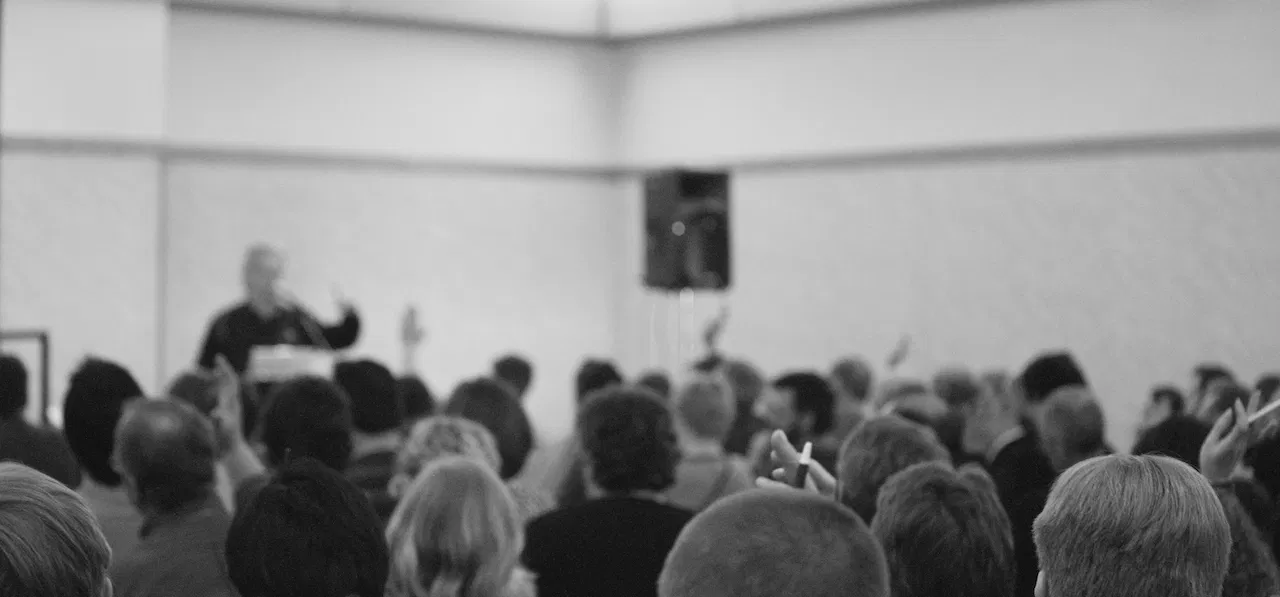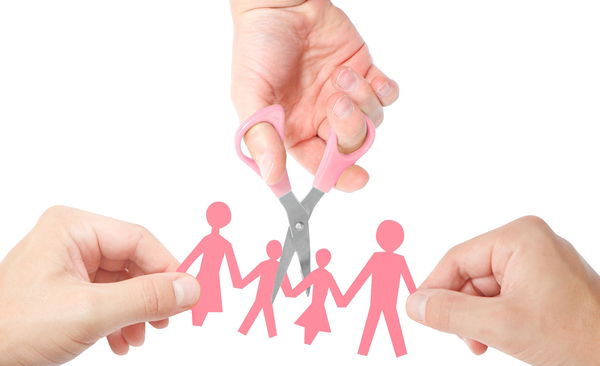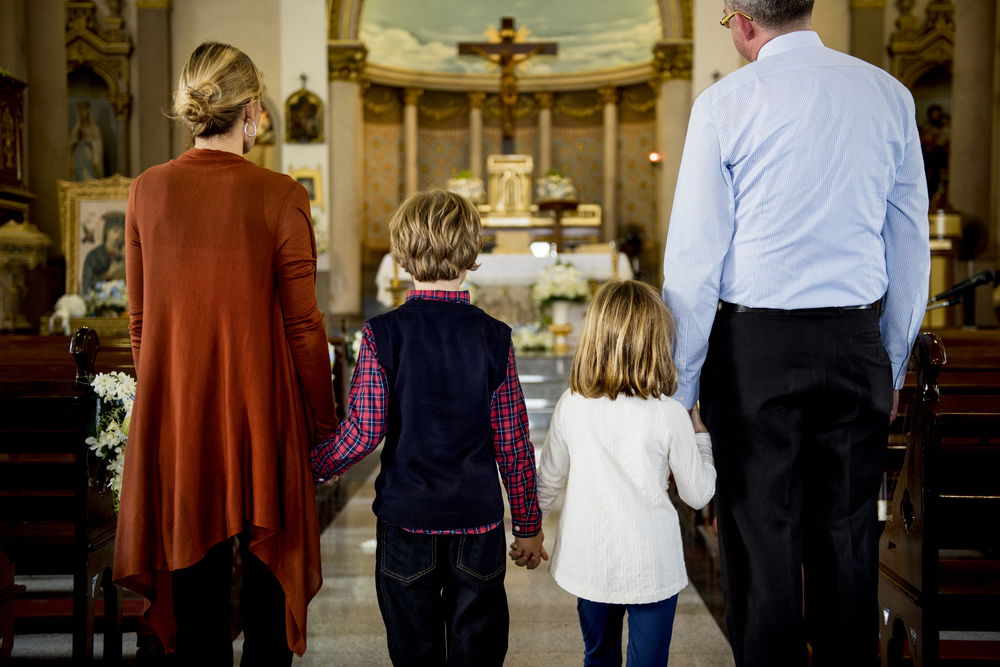Highlights
Last week I wrote about a new report by the Center of the American Experiment, which explores ways that America’s religious institutions can help to strengthen marriage. I concluded by saying that if religious groups want to create significant change, they will first have to figure out how to welcome people like Stephanie, a single mother who feels that she doesn’t belong in church because of her past decisions.
In this piece, I will explore three additional ideas for how religious institutions can help to strengthen marriage, particularly among less-educated Americans who are disproportionately affected by family fragmentation. These ideas were inspired by the lively discussion among the report’s roundtable participants, as well as my own research with working-class young adults.
1.) Religious congregations can think creatively about how to welcome unmarried young adults and those from different socio-economic backgrounds into their communities.
When Stephanie visited a nearby Catholic church, hoping to get connected, she couldn’t help but notice that most of the parishioners seemed affluent. They dressed nicely, and she felt that her t-shirt from Goodwill, jeans, and tattoos made her conspicuous. She felt like if she wanted to go back, she needed to buy new clothes, but she didn’t want to spend the money to do that. No one seemed to smoke, either, so she was the only one who needed to step out during the two-hour Bible study to take a smoke break, which also made her feel awkward.
When she tried bringing her children to Mass, there was no childcare available, and she felt self-conscious about and distracted by their poor behavior in church. As a single parent, it was doubly difficult to get them to behave because there was just one of her and two of them. There was a class her son could attend, but it wasn’t the kind of thing you were just supposed to walk into. There were fees and paperwork, so it didn’t feel like the kind of place she could just drop her son off, even though the teacher was kind and accommodating when Stephanie inquired.
Even social events meant to foster parish community often seemed to have a cost attached. While that’s understandable, it meant attending Lenten fish fries and similar events entailed somewhat of a financial sacrifice for her.
Perhaps most significant for Stephanie, as I discussed last week, was the feeling that she was not good enough because of her past decisions and the fact that she was an unmarried mother.
Stephanie’s experience made me realize that, while religious congregants are usually well-intentioned, there can be class- and family-related barriers that keep some people from becoming part of the community, barriers of which well-resourced congregants might be unaware. A popular song by Matt Maher sung in many churches includes the lines “If you’re rich or poor, well it don’t matter… We’re all broken but we’re all in this together.” And although I think that song represents the ideal of most religious institutions, making it a reality requires some out-of-the-box thinking.
Evangelical churches are often exceptionally good at welcoming all kinds of people. As researcher and family therapist Bill Doherty notes in the Center of the American Experiment report, outreach is “in their DNA.” One evangelical church in Stephanie’s neighborhood has a truly cross-class congregation, which I think has a lot to do with the location, the “come as you are” ethos, and the wide range of programs open to the community—a food co-op, financial management classes, a twelve-step program. Another local evangelical church has a single-parent support group, which goes a long way in making single parents feel like they have a place in that particular faith community.
2.) Religious institutions can provide (more) practical support.
Healthy marriages do not exist in a vacuum, but depend on a broad range of factors, like work and financial stability, culture and personal beliefs, and the quality of community support. Thus, programs like those at the evangelical church mentioned above not only help alleviate poverty and addiction, but also foster stable families.
As one of the panelists, judge Bruce Peterson, explains, “The churches offering AA and NA groups get visited by the people I see in court…. As for becoming productive family members, the combination of felony records, no meaningful employment histories, no role models regarding successful relationships, and lots of trauma (PTSD-type traumas), creates a high barrier to being an attractive marriage partner. These men need lots of help and support on their way to recovery and I have seen churches provide that.” Another panelist Peter Bell noted that he sees a “continuum at work”: “The more dysfunctional the individual, the fewer external support systems they have, the more religious affiliation is important in their transformation.”
If one obstacle young adults face is the feeling that they are not personally ready or mature enough for marriage, these kinds of religiously-inspired transformations could have a positive effect on marriage.
3.) Religious congregants can walk the line between judgment and values through friendship.
One of the themes of the report is that “fear of offending or stigmatizing parishioners… is one of the main reasons clergy don’t speak out about the importance of marriage.” Doherty summarizes the problem as “how to effectively combine theological values—which I’ll translate now as values about marital commitment, children growing up in two-parent families, honor and respect within marriage, and avoiding nonmarital childbearing—with a sense of care and compassion for the complexity of life and the suffering we all have.”
Welcoming and supporting those with fragmented families does not mean that religious institutions must change their theology on marriage. It is possible to withhold particular judgment towards unmarried parents and at the same time acknowledge what the social science evidence suggests: that, on average, marriage is the best environment for children. I know this is possible because I see single or cohabiting parents themselves do it often: they acknowledge marriage as ideal even while they avoid being “judgmental.” As one single mom told me, she gets jealous when she sees intact families: “That’s what I wanted.” She added, “You always think of the family with the white-picket fence… I think it should happen more, but it doesn’t.”
As Fr. Paul Allick notes in the report, “I’m learning I can talk more about these things than I thought.” He explains, “I’ve had some good conversations with divorced people. I’ve never met anyone who is divorced who’s bragging about it.” Those in fragmented families are often first to acknowledge the tragedy of their situations.
That said, these same single parents are, understandably, sensitive to judgment, and therefore often defensive about their situations. One young woman I interviewed, Kelly, posted angry statuses on Facebook after the father of the child in her womb left her during her pregnancy, and eventually failed to show up at the hospital when their baby was born. “F*** men,” she said, and “I don’t need a man in my life.” Based on those messages alone, it would be easy to assume that she would not be open to what many religious institutions have to say about the importance of children having a married mother and father.
But in the context of friendship or a trusting relationship, these kinds of conversations about values can happen naturally and without fear of judgment. Though she may rant on Facebook, when we sit on her couch and eat takeout, she tells me of her hurt and disappointment and her wishes for companionship and that her daughter’s father would be involved. As Kelly told me, recounting her conversation with the absent father of her child, “I told him ‘She’s almost two weeks old, and you haven’t seen her. It hurts me more that you say you’re gonna see her and then don’t show up.’” She felt like it was important for her newborn daughter to have a good relationship with her dad, she said, explaining that she knew what it was like to have a bad relationship with a parent (she was still angry at her mom for her decision to “choose men over her children”).
Churches can be the places where these kinds of friendships are formed, where trust is built between people with intact families and those without, and we can have authentic conversations about tough issues.
In religious institutions today we often fall into two categories. We are either so afraid of stigmatizing and judging people that we say nothing and neglect our rich theology of marriage. Or we are so afraid that our beliefs about marriage will be attacked that we neglect the people who do not fit into the categories that make us comfortable.
A middle way is what Pope Francis has called “accompaniment.” Religious institutions can provide the practical helps that unmarried people may need in order to get to marriage. Congregants can make an intentional effort to reach those who might not feel welcome. Religious institutions can become places where friendships are formed between people with different family histories and from different social classes.
That, I think, would be the most important thing that could happen in the pro-marriage movement in America: people who are happily married getting to know and having fun with people who are not married, or who are struggling in marriage. It is in the context of these kinds of relationships that unmarried young adults might become open to hearing the countercultural ideas about marriage that many religious institutions propose—and it is also where they might find the social and practical resources needed to make those ideals a reality in their lives.
















